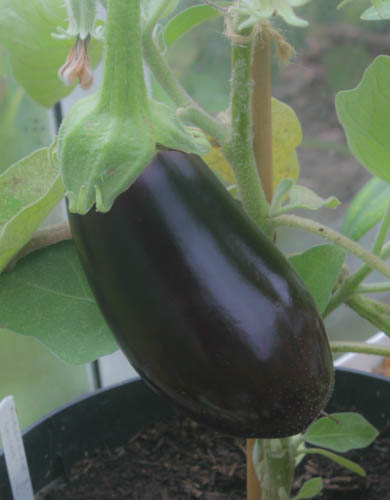
Check your greenhouse heater to make sure that it works before the cold nights set in, have a roll of horticultural fleece on standby and pay attention to the weather forecast. It is worth investing in a back-up heater, too. There is nothing worse than being caught out by a sudden early frost
Leave chillies and aubergines to ripen on the plant for as long as you can, ventilating the greenhouse on sunny days, but not too much so that any benefit of the higher temperatures is lost. Harvest before the first frosts. Reduce watering and clear tender crops from the greenhouse borders once they have finished.
Continue sowing ‘cut and come again’ crops successionally for ongoing autumn harvest.
October is an excellent month for sowing sweet peas in ‘Rootrainers’, 9cm pots of seed compost, or 5-7 seeds in a 13 cm pot spaced 3cm apart. Before doing this, put them seeds on a plate between two damp pieces of kitchen towel. Those that swell and split can then be sown, those that don’t can be left for 48 hours then checked, those still showing no signs of life can be composted. Once germinated, they can be kept in a cold greenhouse or moved into a cold frame, closing the lid when heavy frost is forecast.
Clean the greenhouse glass inside and out on a warm, sunny day. Use a brush and soapy water with added environmentally friendly disinfectant, an old knife or credit card to remove moss from between the panes and rinse with clean water afterwards. Finally, wipe over the glass with a chamois leather and ventilate the glasshouse so it dries out.
You can then insulate the glasshouse with bubble wrap or fleece, making sure you can still open the vents. Some gardeners try to avoid the chore of bubble wrapping the whole greenhouse and prefer layers of horticultural fleece instead. It saves heating the greenhouse, too. You can leave this job until next month in southern or sheltered areas.
Move tender plants like pelargoniums and exotics like Colocasia and orchids like Cymbidium that have been outside in pots and borders, into the greenhouse for winter protection. This should be done before temperatures reach 15C outside.
Dahlia tubers are usually overwintered outdoors in warmer areas, though it’s worth bearing in mind there is always a risk of a ‘one off’ winter that is harder than normal. Once the first frosts have blackened the plants, cut back the foliage to within 5cm of the base and cover with a thick mulch of well-rotted organic matter or forest bark. In colder climates tubers of tender plants like Dahlias and Cannas should be lifted and stored in a cool frost-free greenhouse or shed. Make sure the labels stay with the tubers, turn them upside down for a few weeks, so water drains from the hollow stems, then turn them upright and store them in trays with the tubers covered in compost as protection – spent compost from hanging baskets and containers is ideal. Happy gardening! Matt


